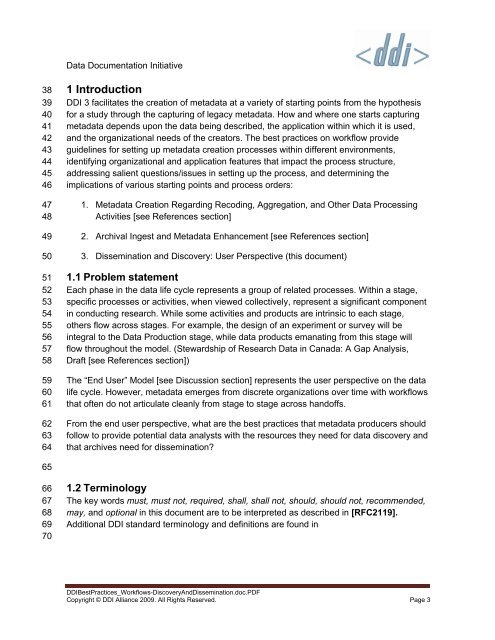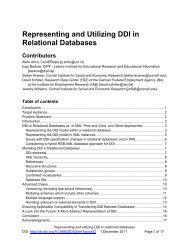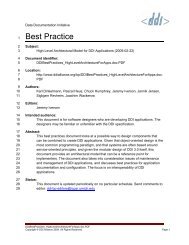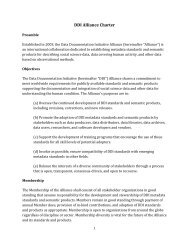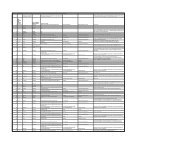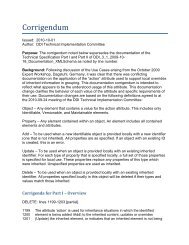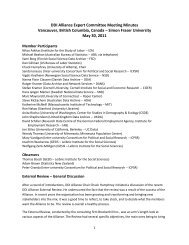DDI Best Practice: Work flows - Data Discovery and Dissemination ...
DDI Best Practice: Work flows - Data Discovery and Dissemination ...
DDI Best Practice: Work flows - Data Discovery and Dissemination ...
Create successful ePaper yourself
Turn your PDF publications into a flip-book with our unique Google optimized e-Paper software.
<strong>Data</strong> Documentation Initiative3839404142434445464748495051525354555657585960616263641 Introduction<strong>DDI</strong> 3 facilitates the creation of metadata at a variety of starting points from the hypothesisfor a study through the capturing of legacy metadata. How <strong>and</strong> where one starts capturingmetadata depends upon the data being described, the application within which it is used,<strong>and</strong> the organizational needs of the creators. The best practices on workflow provideguidelines for setting up metadata creation processes within different environments,identifying organizational <strong>and</strong> application features that impact the process structure,addressing salient questions/issues in setting up the process, <strong>and</strong> determining theimplications of various starting points <strong>and</strong> process orders:1. Metadata Creation Regarding Recoding, Aggregation, <strong>and</strong> Other <strong>Data</strong> ProcessingActivities [see References section]2. Archival Ingest <strong>and</strong> Metadata Enhancement [see References section]3. <strong>Dissemination</strong> <strong>and</strong> <strong>Discovery</strong>: User Perspective (this document)1.1 Problem statementEach phase in the data life cycle represents a group of related processes. Within a stage,specific processes or activities, when viewed collectively, represent a significant componentin conducting research. While some activities <strong>and</strong> products are intrinsic to each stage,others flow across stages. For example, the design of an experiment or survey will beintegral to the <strong>Data</strong> Production stage, while data products emanating from this stage willflow throughout the model. (Stewardship of Research <strong>Data</strong> in Canada: A Gap Analysis,Draft [see References section])The “End User” Model [see Discussion section] represents the user perspective on the datalife cycle. However, metadata emerges from discrete organizations over time with work<strong>flows</strong>that often do not articulate cleanly from stage to stage across h<strong>and</strong>offs.From the end user perspective, what are the best practices that metadata producers shouldfollow to provide potential data analysts with the resources they need for data discovery <strong>and</strong>that archives need for dissemination?651.2 Terminology6667 The key words must, must not, required, shall, shall not, should, should not, recommended,68 may, <strong>and</strong> optional in this document are to be interpreted as described in [RFC2119].69 Additional <strong>DDI</strong> st<strong>and</strong>ard terminology <strong>and</strong> definitions are found in70 <strong>DDI</strong><strong>Best</strong><strong>Practice</strong>s_<strong>Work</strong><strong>flows</strong>-<strong>Discovery</strong>And<strong>Dissemination</strong>.doc.PDFCopyright © <strong>DDI</strong> Alliance 2009. All Rights Reserved. Page 3


